
The Family of Sir Richard Saltonstall. David des Granges, c. 1660.

Дама после кесарева- 19 век. Шов с очаровательными бантиками.
По беременности-родам в свободном поиске картинок очень немного, их приходится искать в музеях и медицинских библиотеках.
Многие картинки могут шокировать, я их специально выделила в отдельный пост- поэтому впечатлительных предупреждаю заранее.

Муж с беременной женой.
A husband wearily pampers his pregnant wife. .
1838
В библиотеках сохранилось много старинных анатомических рисунков, от примитивных до выполненных высокопрофессиональными художниками:
-------------Беременность-анатомия------
========================================
На ранних картинках часто встречаются аналогии с яйцом:

Femme Selenite accouchant de plusieurs oeufs, d'apres U. Aldrovandi.
From: Histoire des accouchements chez tous les peuples, 2 volumes.
By: Gustave-Joseph Alphonse Witkowski
Published: G. SteinhilParis 1887
--------------------Плод-A foetus--------------
========================================

Матка и эмбрион- есть целая серия таких рисунков.
Woodcut illustrating the uterus and the foetus. Embryo.
Woodcut
From: De conceptu et generatione hominis, et iis quae circa haec potissimum consyderantur libri sex
By: Jakob Rueff
Published: Christophorus FroschoverusTiguri 1554

A new born child stepping out of a broken egg
---------------------------

Gravida from a miniature painted about 1400. In Leinzig Codex 1122.
early 15th century

From Girolamo Mercurio, La commare o raccoglitrice dell’eccellentissimo signor Scipion Mercurio: Divisa in tre libri, Verona: Francesco de’ Rossi, 1642,

16thC
From: Hebammen Buch, ...
By: Bourgeois, Louise
1628

Illustration of a woman in utero: 'Dissection to expose child in the womb'
1671
From: The midwives book. Or the whole art of midwifery discovered. Directing childbearing women how to behave themselves /
By: Jane. Sharp
Published: S. Miller,London : 1671.
Кроме гравюр, были куклы- манекены:
-------------------------------

Похожа на японскую "беременную" куклу:
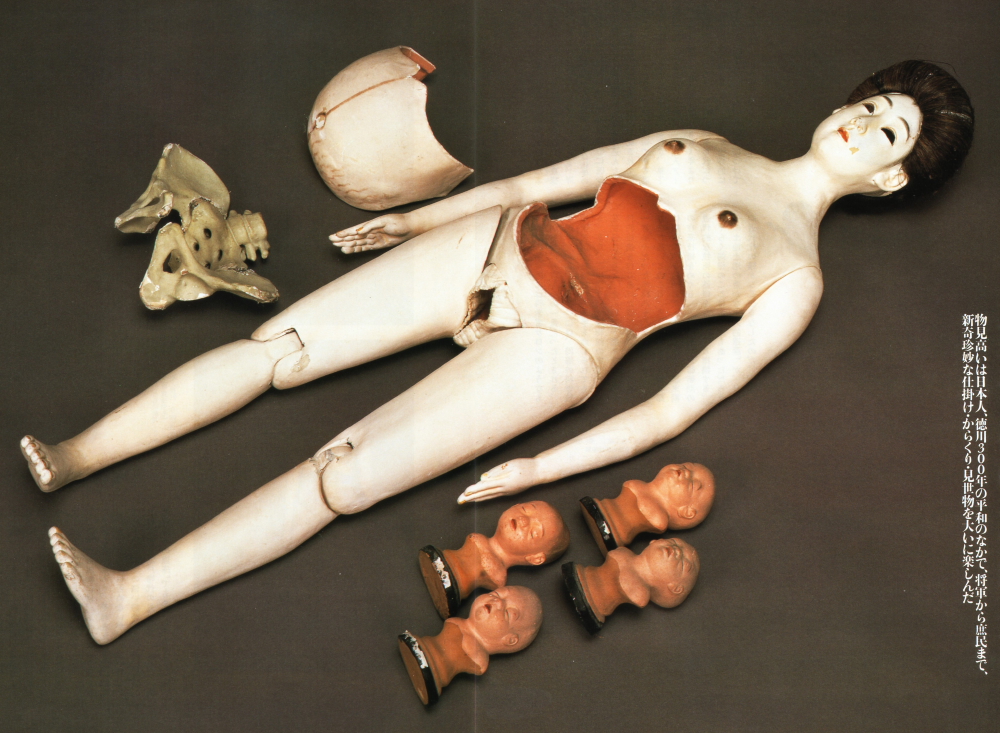
Они использовались в качестве учебных пособий в медицине, а также для показов интересующимся процессом беременности и родов.


Их очень много, потом эти манекены стали искусно выполненными в натуральную величину, я их уже показывала и еще сделаю специальную подборку.
----------------------Эмбрионы----------
========================================

Foetus in uterus: de formato foetu Original Negative is a Vinegar Negative CAN NOT BE RESCANNED
From: Opera physica anatomica
By: Fabricius ab Aquapendente, Hieronymus
Published: R. MegliettiPadua 1625
----------------------------------------

a fetus, lying on its side, in an opened womb from one of the earliest books on Obstetrics
Engraving 17th Century By: Justin Dittrich Siegmund
From: An early caesarean operation using a longitudinal incision.
By: Justin Dittrich Siegmund

Showing pelvis of woman, child's skull, positions of the fetus in the uterus, the
placenta, and medical instruments.
From: The accompisht midwife, treating of the diseases of women with child, and in child- bed.
By: Francois Mauriceau
Published: J. Darby for B. BillingsleyLondon 1673
========================================

The first and second row of plate 1, drawn by Christian Koeck and engraved by the Klauber brothers, from Samuel Thomas Soemmerring, Icones embryonum humanorum, Frankfurt am Main: Varrentrapp and Wenner, 1799
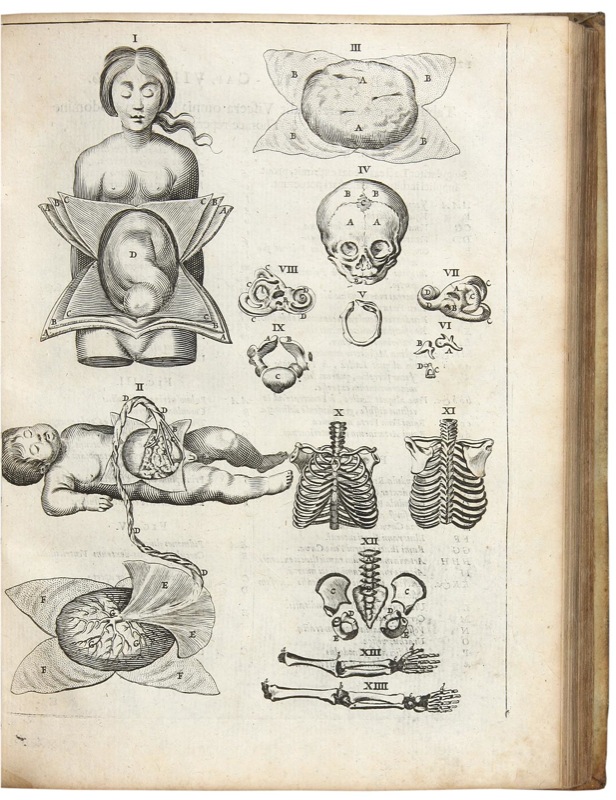

Soemmerring’s Images of human embryos, 1799

A non-developmental series of models. The Royal Museum of Physics and Natural History in Florence was opened in 1775
----------------------------------

"Готовый" к родам плод.
A baby in the upside down foetal position inside the uterus ready for the birth.
--------------------Gautier d'Agoty--------------
========================================
Прекрасный художник, постараюсь сделать специальную подборку.

A seated female dissected figure holding a dissected baby
Oil By: Gautier d'Agoty, Jacques Fabien

Anatomie des parties de la génération de l’homme et de la femme
Paris, 1773.
Jacques Fabien Gautier D’Agoty

A pregnant woman with the left side of her upper body and viscera exposed, her left arm raised above her head. Possibly plate to: Gautier d'Agoty, Exposition anatomique, Marseille, Paris and Amsterdam 1725

Anatomie des parties de la génértion de l’homme et de la femme
Jacques Fabien Gautier D’Agoty
Paris, 1773
----------------------ИНСТРУМЕНТЫ-------
========================================
В I-II вв. н.э. в Риме работал хирург и акушер Архивен, который впервые применил при обследовании влагалища и шейки матки зеркало, названное им диоптра (греч. dioptra; от diopleuo - видеть всюду). Гинекологические зеркала и другое хирургические инструменты обнаружены при раскопках древнеримских городов Помпеи и Геркуланум, погребенных под пеплом вулкана Везувия в 79 г. н.э.
Но есть еще более древние экспонаты:
----------------Vaginal speculum--------------
========================================
Для обследований и диагностики мочеполовых заболеваний. Они также используются в соответствующих хирургических процедурах. Винтовой механизм вращается, расширяя расстояние между лезвиями.
Vaginal speculum, Roman, 100 BCE-400 CE
Найден в Ливане, винтом регулировалась ширина расхождения.
Для диагностики и операций.
This bronze vaginal speculum was found in the Lebanon. However, it is thought to be a Roman example. The screw part is modern. It shows the relatively sophisticated instruments used in Roman medicine. It was inserted into the body.
Находка из Помпей.
The original of this vaginal speculum was found at Pompeii. It is now in the Museo Nazionale in Naples. The speculum was inserted into the body. The handles were then rotated to expand the distance between the blades. This is a very early Roman example of this gynaecological instrument. Variations on it are still used.
Vaginal speculum, Europe, 1600-1800
Vaginal speculum, Europe, 1701-1800
The speculum is inserted into the vagina. The screw mechanism is rotated to expand the distance between the blades. This example is thought to be French. It dates from the 1700s.
-----------------------------------
Vaginal speculum, France, 1801-1830
A vaginal speculum examines inside the vagina. Specula examinations caused controversy in the 1800s over male doctors performing such an intimate examination on women
---------------------------------
Vaginal speculum, Paris, France, 1851-1900
Vaginal speculum, Paris, France, 1801-1900
Ricord type vaginal speculum, by Mathieu, Paris, France, 1825-1871
-------------------gynaecology-16 век-------------
========================================

Apple-shaped pessary with central canal.
Printed Text with Illustration
From: Les chirurgie francoise recueillie des antiens médecins et chirurgiens. Avec plvsievrs figvres des instrumens necesseres pour l'opération manuelle
By: Guillemeau, Jacques
Published: Ches N. GillesParis 1594

The examination of the uterus, the natural posture of a child at birth, an uterus cut open and a chair used for the delivery of children.

Engraving of 12 figures of fetuses in uteruses and assorted obstetrical instruments, including two types of birthing chair
1757
========================================

Wellcome Library, London
Female generative organs with foetus
By: Gautier d'Agoty, Jacques Fabien
Published: GautierParis circa 1752
-----------------------------
Щипцов не было, они вошли в употребление гораздо позже, и родиться младенцу помогали специальной петлей или использовали сеточку.
Эти картинки поздние, перерисованные из старинных книг по родам:

Plate illustrating an infant being pulled out the uterus using a rope around its ankles. Taken from one of the first books on Obstetrics.
Engraving 17th Century By: Justin Dittrich Siegmund
From: An early caesarean operation using a longitudinal incision.
(ранняя операция кесарева с использованием продольного разреза).
By: Justin Dittrich Siegmund


Plate illustrating an infant being pulled out the uterus using a rope around its ankles. Taken from one of the first books on Obstetrics.




----------------
Сеточка

Obstetrical instrument
From: Histoire des Accouchements
By: Gustave-Joseph Alphonse Witkowski
Published: 1887
=================Разные позиции=============

Wellcome Library, London
Breech presentation
From: The principles and practice of obstetric medicine and surgery


Wellcome Library, London
Position of the right hip. Figure showing child being turned in the womb.
Engraving

Wellcome Library, London
1. Extraction of the arms
2. Extraction of the head
------------------------

Illustrations of a woman about to give birth, with the baby's head emerging from the vagina, with a doctor's hand ready to receive it. The top image shows the baby's head face down, in the bottom illustration the baby's head is face up.
Engraving 1828-9
======================Фото из музеев===============
>
Obstetrical instrument set, United Kingdom, 1871-1900
Tools in this obstetrical surgical instrument set include three sets of forceps for gripping the baby’s head and a vectis. A vectis was a levering instrument used to ease the head out. There are also destructive tools for removing a dead and obstructed foetus. A perforator pierced the child’s skull; two hooked instruments called crochets were inserted into the mother’s birth canal and hooked onto part of the child; and a pair of craniotomy forceps was a heavy toothed or ridged crushing instrument for breaking up the skull bones of a foetus. Devices and tools were used for different applications depending on the circumstance. An obstetric physician, or male midwife, was not normally present in routine births in the 1800s.
http://www.sciencemuseum.org.uk/brought
-------------------Акушерские щипцы------
========================================
Первая модель акушерских щипцов была разработана в Англии в 1569 г. врачем Гильомом Чемберленом (Chamberlen, Guillaume, 1540-1596) и усовершенствована его старшим сыном Петером Чемберленом (Chamberlen, Peter, 1560-1631). Однако, к сожалению, это изобретение оставалось секретом династии Чемберленов на протяжении нескольких поколений.
Со временем в различных странах мира было создано множество моделей акушерских щипцов. Некоторые из них были хороши только в руках их создателей, другие получили всемирную известность, но одно несомненно - их изобретение значительно снизило число плодоразрушающих операций и смертность в родах.

A diagram demonstrating different kinds of forceps, and their use in childbirth. Lithograph by G. Scharf.
after: George Scharf
Collection: Iconographic Collections
-----------------Obstetrics------------
========================================

Wellcome Library, London
Six diagrams of babies being delivered with the aid of forceps and three illustrations of obstetrical instruments. Engraving.

Obstetrical instruments and demonstration of them being used.
1751
From: Suite des Observations sur les causes et les accidens de plusieurs accouchemens laborieux /
By: A. Levret
Published: Delaguette,Paris : 1751.
-------------------------------
The use of the obstetrical forceps as illustrated in a treatise of 1754, by William Smellie

Shows in lateral view of the pelvis the method of assisting the delivery of the head of the foetus, with the long curved forceps in praeternatural cases when it cannot be done with the hands.
1754
------------------------

Delivering twins using forceps.
From: Embryulcia nova detecta
By: Schlichting
Published: Amsterdam 1747
--------------------
В широкую клиническую практику акушерские щипцы начали входить лишь в 1723 г., когда нидерландский анатом и хирург Дж.Палфин (Palfyn, Jean, 1650-1730) представил для испытания в Парижскую Академию наук несколько образцов своего собственного изобретения. Щипцы Палфина значительно отличались от известных нам сегодня прежде всего несовершенством конструкции: они состояли из двух широких неперекрещивающихся стальных ложек на деревянных рукоятках, которые связывались между собой после наложения на головку. Однако это не умаляет значения его открытия. Первое описание щипцов Палфина появилось в 1724 г. во втором издании руководства "Хирургия" Л.Гейстера, и сразу же на их основе стали создаваться новые модификации.
----------------------------

Wellcome Library, London
Plate showing the birth of a baby, using forceps (4 of 4)
1781



Wellcome Library, London
Fig. 1. Application of the forceps, afterr the rump has come out.
Fig. 2. Application of the forceps with the head to the side.

Wellcome Library, London
Fig. 1. Removal of the child from the pubis, after the cutting of the fibro-cartillage.
Fig. 2. Extraction of head with forceps after the operation of the symphysis.
------------------Щипцы-фото------------
========================================
Французский акушер Андре Левре (Levret, A., 1703-1780) придал своим длинным щипцам тазовую кривизну, усовершенствовал замок, загнул концы тонких рукояток крючком кнаружи, установил показания и способы применения своей модели.
Щипцы английского акушера Уильяма Смелли (Smelli, William, 1697-1763) были очень короткими и имели весьма совершенный замок, ставший типичным для всех последующих английских систем. Щипцы Джеймса Симпсона (Simpson, sir James Young, 1811-1870), напротив, были длинными, но легкими и отличались подвижностью замка.
В России акушерские щипцы начали применяться в 1765 г.: их впервые наложил первый профессор медицинского факультета Московского университета И.Ф.Эразмус, начавший в 1765г. преподавание акушерства на кафедре анатомии, хирургии и бабичьего искусства.

Wellcome Images
Forceps, obstetrical, Smellie, steel and leather, British, c.1750.

Wellcome Images
Forceps, obstetrical, Chamberlen, steel, 1680-1750. Full view, solid black perspex background.

Forceps, obstetrical, Palfyn, steel and wood, two separate sections, possibly a model. Full view, graduateed matt black perspex background.

Wellcome Images
Forceps, obstetrical, brass, Norwegian, 19th century. Full view, black perspex background.
Tanier's Axis Traction forceps, Paris, France, 1871-1900
In 1877, French obstetrician Etienne Tanier (1828-1897) introduced the most important innovation in obstetrical forceps during the 1800s. It consisted of an attachment to the blades. This allowed traction to be applied in the axis of the birth canal. The birth canal is the path taken by the foetus during its passage through the pelvic cavity.
--------------------Кесарево сечение------------------
========================================
Выдержка из книги Р. Фелькина (R. Felkin), опубликованной в Марбурге в 1885 г., с описанием операции кесарева сечения, наблюдавшейся путешественником в негритянской семье Центральной Африки : "20-ти летняя женщина, совершенно нагая, лежала на несколько наклоненной доске, изголовье которой упиралось в стену хижины. Под влиянием бананного вина она находилась в полусонном состоянии. К своему ложу она была привязана тремя повязками. Оператор с ножом в руках стоял с левой стороны, один из его помощников держал ноги в коленах, другой фиксировал нижнюю часть живота.
Вымыв свои руки и нижнюю часть живота оперируемой сначала бананным вином, а затем водою, оператор, издав громкий крик, который подхватила собравшаяся вокруг хижины толпа, провел по средней линии живота разрез от лобкового сочленения почти до самого пупка. Этим разрезом он рассек как брюшные стенки, так и самую матку; один ассистент прижег с большим искусством раскаленным железом кровоточащие места, другой раздвинул края раны, чтобы дать хирургу возможность извлечь из полости матки ребенка.

Drawing showing a caesarean operation taking place, performed in Uganda, (Central Africa) by Africans
From: Edinburgh Medical Journal
----------------------------
Удалив через разрез отделившуюся тем временем плаценту и образовавшиеся свертки крови, оператор при содействии своих помощников подвинул больную к краю операционного стола и повернул ее на бок таким образом, чтобы из брюшной полости могла вытечь вся жидкость. Только после всего этого были соединены края брюшных покровов при помощи семи тонких хорошо отполированных гвоздиков. Последние были обмотаны крепкими нитями. На рану была наложена паста, которая была приготовлена тщательным разжевыванием двух каких-то корешков и выплевываний получившейся пульпы в горшок; поверх пасты был наложен нагретый банановый лист и все это укреплено при помощи своего рода бандажа".

Wellcome Library, London
Gynaecological texts, including information about conception, pregnancy and childbirth - Woman who died in childbirth on operating table, with doctor holding knife after delivering baby by Caesarean section, a nurse holding swaddled child
Ink and Watercolour Circa 1420-30

Showing birth of Antichrist. The first known illustration to show Caesarian Section.
Woodcut 1498
From: Revelationes divine
By: Methodius of Olympus
Published: Michael FurterBasle 1498

A surgeon performing a Caesarean operation on an agonized woman who had apparently been carrying a dead baby in her womb for five years. Reproduction, 1933, of a woodcut, 1560.


Preparation for caesarian section
Woodcut
From: La commare o riccoglitrice dell'eccmo. sr. Scipion Mercurii
By: Scipione [Girolamo] Mercurio
Published: G.B. CicottiVenice 1601
------------------------------

Scene depicting a cesarian section, the incision.
17th century
From: La commare o raccoglitrice
By: Scipione [Girolamo] Mercurio
Published: Francesco de RossiVerona 1642
page 176

Scene depicting a cesarian section, the
birth.
From: La commare o raccoglitrice
By: Scipione [Girolamo] Mercurio
Published: Francesco de RossiVerona 1642
-----------------Кесарево-19 век--------------------
========================================

Diagram showing two different incisions, the longitudinal procedure introduced by Beaudeloque and the transverse procedure introduced by Lauvergeat, used in performed early caesarean operations
19th Century

Wellcome Library, London
An early caesarean operation using a longitudinal incision.
19th Century
--------------------------------

Childbirth or surgery on the vagina.
From: Abbildungen aus dem Gesammtegebiete der theoretisch-praktischen Geburtshülfe
By: Maygrier & Siebold
Published: Friedrich August HerbigBerlin 1835

Extraction of the foetus by caesarian.
From: Abbildungen aus dem Gesammtgebiete der theoretisch-praktischen geburtshulfe, nebst beschriebender Erklarung derselben.
By: Eduard Caspar Jacob Siebold, von
Published: Friedrich August HerbigBerlin 1829
---------------------------------------

Mother after caesarian section.
Lithograph
From: Abbildungen aus dem Gesammtgebiete der theoretisch-praktischen Geburtshülfe, nebst beschreibender Erklärung derselben /
By: J. P. Maygrier
Published: F.A. Herbig,Berlin : 1829
========================================
-----------------------19 век-------------------
========================================

Аппарат для изучения сокращения матки во время родов.
Apparatus for studying uterine contractions during childbirth.
From: Histoire des accouchements chez tous les peuples
By: Gustave-Joseph Alphonse Witkowski
Holmes, George W. (George Winslow), 1876-
Ruggles, Howard E. (Howard Edwin), 1886-1939.
Radiography.
--------------------------------
Использовалось переливание крови :

Blood transfusion
From: Histoire des accouchements
By: Gustave-Joseph Alphonse Witkowski
Published: SteinheilParis 1887
-----------------Craniotomy-------------
-----------в случае мертвого плода-----------
========================================
Врачей-акушеров было немного и далеко не каждая семья могла воспользоваться их помощью.
В сложных случаях врач часто успевал слишком поздно.
Врачи использовали эти разрушительные инструменты для расчленения и извлечения мертвого плода из тела матери.
Как пишут- это были наиболее часто применямые инструменты.
Здесь я не привожу полный перевод, кому надо, переведет сам.

Wellcome Library, London
Obstetrics: Craniotomy
From: Elements of operative midwifery
By: Davis, D
Published: London 1825


-------------------Щипцы ------------------
для удаления мертвого плода из тела матери
Cephalotribe; obstetric tool, Geneva, Switzerland, 1750-1850
The instrument pierced and crushed the foetus head to extract it from the mother’s body. They were used as a last resort only after the foetus was dea
Craniotomy forceps, Paris, France, 1801-1850
Craniotomy forceps were also known as cranioclasts. They were heavy toothed or ridged crushing instruments for breaking up the skull bones of a foetus. They were destructive tools. Cranioclasts were a last resort after the foetus was dead. The foetus may have died during the pregnancy or during a difficult labour.
----------------------------------------
Decapitating hook, London, England,1851-1900
Крючок для удаления мертвого плода из тела матери. Он извлекал все тело или части тела.
Basilyst obstetric tool, Paris, France, 1851-1900
Basilysts are destructive tools to extract an obstructed foetus from the mother’s body. A basilyst was used as a last resort only after the foetus was dead. It may have died during the pregnancy or during a difficult labour. A metal shaft with an olive-shaped screw and a hinged ‘scoop’-shaped blade comprise the basilyst. The screw penetrated and collapsed the infant’s skull. The scoop gained leverage behind the head to aid extraction.
http://www.sciencemuseum.org.uk/brought
Set of obstetrical instruments, England, 1831-1870
набор инструментов в бархатных нишах. Включены два набора: щипцы для захвата головы ребенка, тупой крюк, чтобы регулировать положение ребенка, и скальпель, возможно, перерезать пуповину, перфоратор- пробить череп ребенка. Этот набор середины 19-го века.
Акушерская сумка
Midwifery bag, England, 1871-1900
Инструменты и лекарства, которые могут потребоваться при рождении ребенка. Разные щипцы и четыре небольшие стеклянные бутылки - три из которых с надписью "Яд".
Instruments and medicines that might be required at the birth of a child are contained in this midwifery bag. The heavy leather box is more like a suitcase than a bag. It opens to reveal forceps held in leather straps in the lid, an instrument tin and four small glass bottles - three of which are marked ‘poison’. Craniotomy forceps are also included. These were heavy, toothed or ridged crushing instruments to break up the skull bones of a foetus.1860s.
http://www.sciencemuseum.org.uk/brought
Часто не удавалось спасти ни мать, ни ребенка.
Смерть была настолько обычным делом, что к ней относились спокойно и готовились.
Не зря в старинных сказках так часто упоминается про мачеху, а в литературе и описаниях портретов прекрасных юных женщин даже в 19 веке постоянно встречается: умерла от родов.

Christian von Mechel
After Johann August Nahl I
1770-1800
гробница мадам Langhans в церкви в Hindelbanck недалеко от Берна.
The famous tomb by Nahl of Madame Langhans in the church at Hindelbanck near Bern, showing her bursting through the broken slab of the tomb carrying her child
================================
Есть еще много интересных картинок: старинные портреты беременных, гравюры- после родов, купание и кормление, они гораздо позитивнее- может быть, попозже продолжу тему:

Рождение принца Уэльского
Date
1689
A broadside satirising the birth of the Prince of Wales (James Edward Stuart, the future Old Pretender) with an etching by de Hooghe.
====================Еще по теме==================
Начало:

Роды на старинных картинках, оба поста-ТУТ

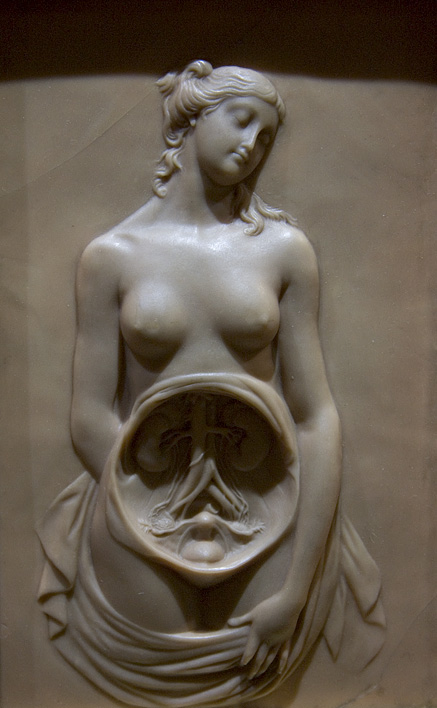
Старинные медицинские анатомические скульптуры и барельефы-ТУТ
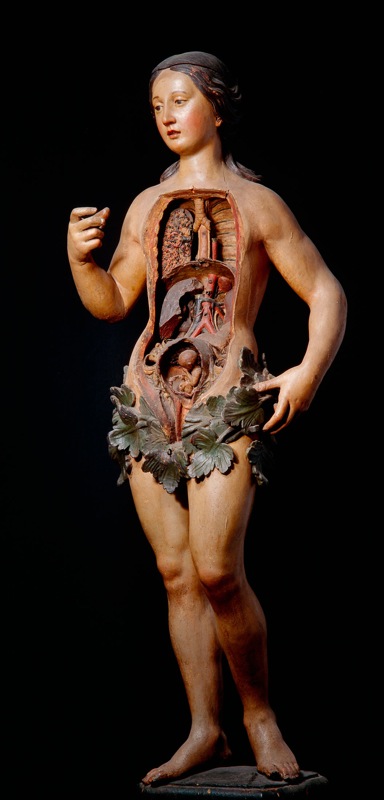
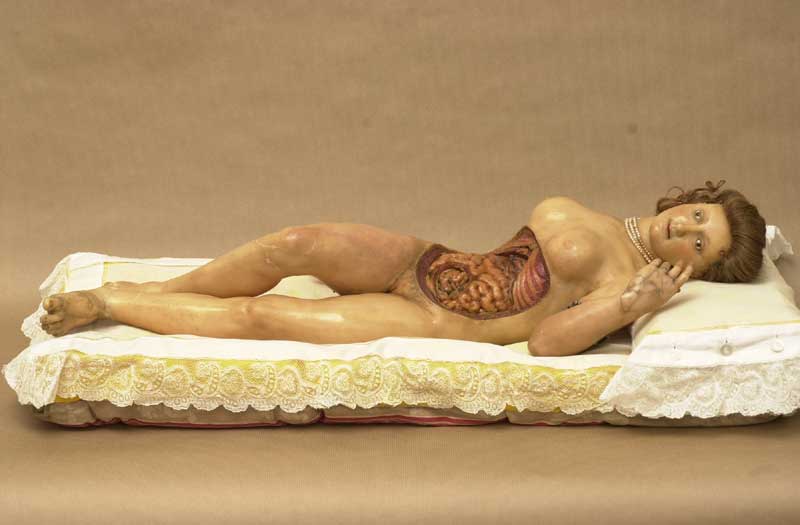
И ТУТ
Почитать в доступной форме можно по линкам и здесь:
http://www.webmedinfo.ru/referat/text/i
История развития акушерства с древних времен до наших дней.
------------------------линки-----------
http://ru.wikipedia.org/wiki/%D0%90%D
http://www.erudition.ru/referat/ref/i
http://www.ref.by/refs/50/10703/1.html
http://www.medicinform.net/history/nauk
http://www.webmedinfo.ru/referat/text/i
http://badis.narod.ru/home/histor/histo
=============================
Картинки:
http://images.wellcome.ac.uk/
http://www.sciencemuseum.org.uk/
http://www.britishmuseum.org
========================================

Интересные картинки
ОтветитьУдалить